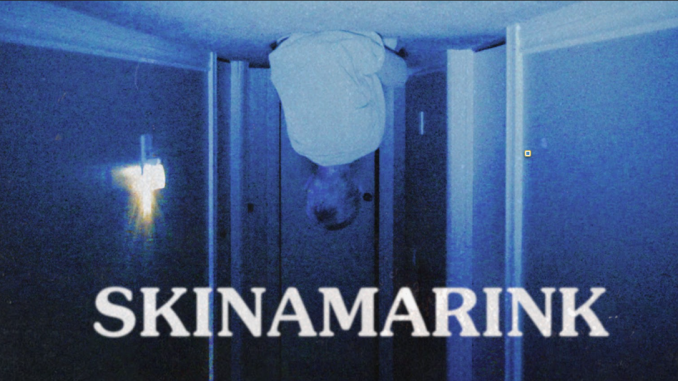
By Shea Stevenson
If you haven’t heard of “Skinamarink,” don’t worry. No one has. The movie is director Kyle Ball’s first feature film and was released earlier this month. It’s near-silent, abstract, and asks you to pay close attention to largely static frames for 90-ish minutes. The magic trick is that “Skinamarink” is exactly as good as you let it be – and you can let it be the best.
There are three major camps that an audience member might fall into after seeing this movie.
- This is not a movie.
To these people, the way it presents its narrative is so incompatible with their idea of how to interpret meaning from cinema that it comes across as totally meaningless and a waste of time.
- “Oh, huh, yeah, neat.”
While this crowd acknowledges that the movie is trying to do something different, they find it inane. Whether that’s the digital grain, the fact that they do know the scene it arose from and therefore are not impressed by its freshness, or just a more open-minded statement of the first crowd’s point. Viewers are damning with faint praise; the two-point-five stars says it all.
- This rules severely.
These people liked it. This one is me.
“Skinamarink” is one of the only horror movies that’s ever gotten to me. I saw this last year, prior to wide release, and it hasn’t left my head. The more thought I give to it, the more meaning I get back. In its meditative emptiness, “Skinamarink” manages to capture a visceral sense of depth and mystery, the kind I stopped being able to feel when I was 10 and realized there weren’t ghosts in Minecraft. It feels like it doesn’t end when the credits roll or where the frame stops.
To me, “Skinamarink” is the first true flower of the next wave of creatives who grew up not on classic horror cinema or literature, but creepypastas and internet urban legends. Things that operate primarily on negative space and folkloric iteration with the sense that there is always more to learn.
Its effectiveness feels primordial, like a horror movie beamed into our world from another much more patient one. The fears it draws upon are those that would be true to any person; obfuscation of things we want to see, claustrophobia, and bad things happening to children.
Your first viewing will consist almost entirely of doing a real-time mind-puzzle where you try to figure out what is going on, both at any given moment and in general. With every shot focused only on the negative space of what we really want to see, we slowly come to understand what’s happening. With each realization comes increasing dread – it’s always worse than we thought. By the end, if you’re anything like me, you’ll have grasped the plot and vibes. Only after some reading and critical thinking do you unlock the full sense of terror while sitting by the computer late at night, not even watching the movie.
Boy, that’s a lot of hoops to jump through just to trick your brain into thinking it’s in danger! If that all sounds lame to you, steer clear of “Skinamarink.” This will be easy for you, as it’s hard to get to even if you want to see it. But if any of that sounds slightly interesting, I implore you to check it out.
Most theaters have simply never played a movie like this before, but if there’s one thing I’m sure of, it’s that they will again. “Skinamarink” reportedly made about $1.5 million at the box office on a budget of $15,000. Love it or hate it, it won’t be the last. I think there’s a decent shot we’ll look back on “Skinamarink” and be taken aback at the contemporary reception to the most influential horror movie of its time.
